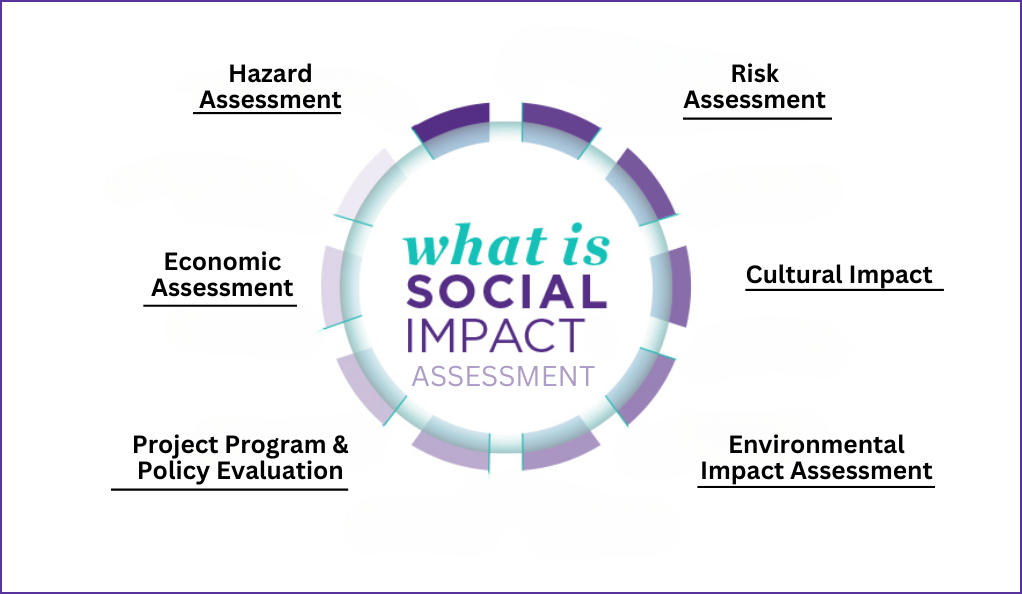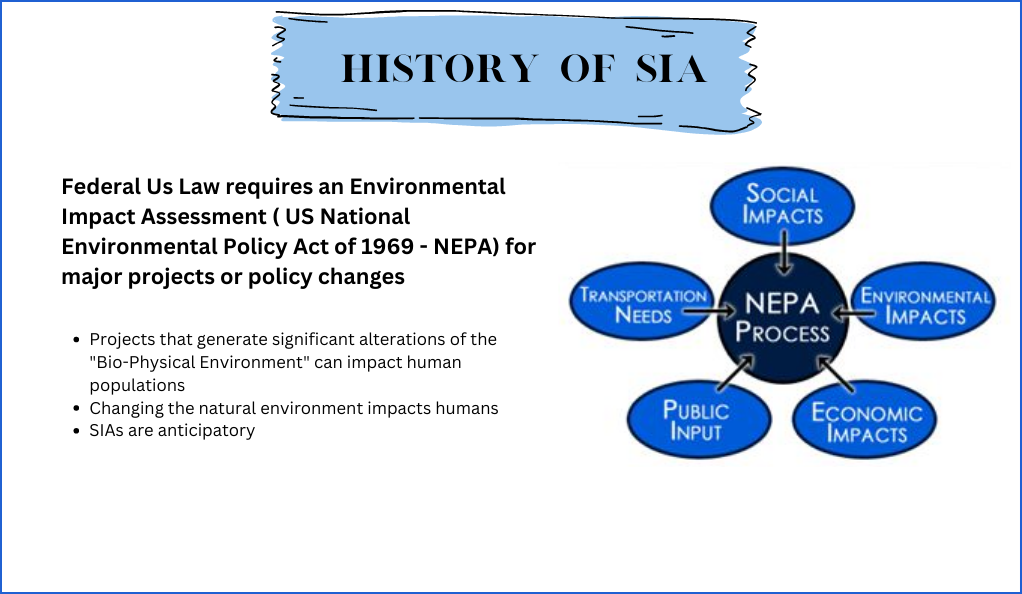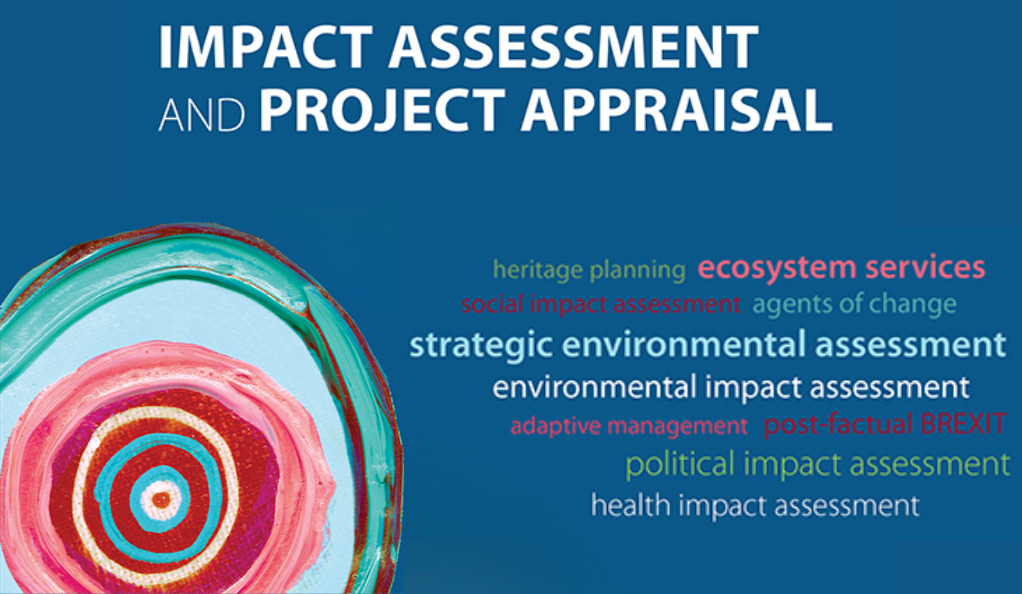The concept of Social Impact Assessment (SIA) has grown in importance over the past few decades, reflecting a broader societal shift towards sustainable and responsible development. As organizations, governments, and communities become more interconnected, the need to understand and measure the social implications of various projects and initiatives has become paramount. This introduction aims to provide a comprehensive overview of the origins, significance, and methodologies of SIA, setting the stage for a deeper exploration of its evolution.

Why is SIA Important?
- Holistic Development: SIA ensures that development projects consider the broader societal implications, promoting a more inclusive and sustainable approach.
- Stakeholder Engagement: It fosters better communication and understanding between project developers and affected communities, ensuring that all voices are heard.
- Risk Mitigation: By identifying potential social risks early on, organizations can take proactive measures to address them, reducing the likelihood of conflicts or negative publicity.
Components of SIA
| Component | Description |
|---|---|
| Scoping | Identifying the key social issues and stakeholders relevant to the project. |
| Baseline Data Collection | Gathering information about the current social environment before the project’s implementation. |
| Impact Prediction | Forecasting the potential social changes that might result from the project. |
| Mitigation Measures | Proposing strategies to minimize negative impacts and enhance positive ones. |
| Monitoring & Management | Continuously tracking the social impacts and adjusting strategies as needed. |
Challenges in Implementing SIA
Implementing Social Impact Assessment (SIA) presents challenges. Accurate data collection can be resource-intensive and time-consuming. The qualitative nature of SIA introduces subjectivity, leading to potential interpretation variances. Moreover, ensuring meaningful participation from all stakeholders, especially marginalized communities, can be complex, making the balance of interests vital for SIA’s success.
Historical Overview of Social Impact Assessment (SIA)
The journey of Social Impact Assessment (SIA) is a testament to the evolving understanding of development and its multifaceted implications on societies. This overview traces the origins, milestones, and transformations of SIA over the years.

Origins in the Late 20th Century
The late 1960s and early 1970s marked a significant shift in global consciousness towards environmental and social issues. The world witnessed a series of events, from environmental disasters to social upheavals, that underscored the need for a more holistic approach to development. It was during this period that the concept of assessing the social impacts of projects and policies began to take shape.
The 1980s: Formalization and Frameworks
The 1980s saw the formalization of SIA as a distinct field. Governments, especially in developed countries, began to recognize the importance of understanding the social consequences of their actions. This decade witnessed:
- The establishment of formal guidelines and procedures for conducting SIAs.
- The integration of SIA into Environmental Impact Assessment (EIA) processes in several countries.
The 1990s: Expansion and Globalization
The 1990s marked a period of rapid globalization, with multinational corporations expanding their operations across borders. This expansion brought to light the varying social implications of projects in different cultural and socio-economic contexts. Key developments included:
- The adaptation of SIA methodologies to cater to diverse cultural contexts.
- The rise of non-governmental organizations (NGOs) advocating for the rights of affected communities.
The 21st Century: Technological Advancements and New Challenges
The dawn of the 21st century brought with it technological advancements that reshaped the way SIAs were conducted. Digital tools enabled more comprehensive data collection and analysis. However, the century also posed new challenges:
- The increasing complexity of global supply chains made it harder to trace and assess social impacts.
- The rise of social media amplified the voices of affected communities, necessitating more transparent and inclusive SIA processes.
Comparison of SIA Over the Decades
| Decade | Key Developments | Challenges |
|---|---|---|
| 1980s | Formalization of SIA, Integration with EIA | Establishing standardized procedures |
| 1990s | Globalization, Rise of NGOs | Cultural adaptability, Advocacy for affected communities |
| 2000s | Technological advancements, Digital data collection | Complex supply chains, Social media influence |
Key Players in the Evolution of Social Impact Assessment (SIA)
The evolution of Social Impact Assessment (SIA) has been shaped by various key players, each contributing their unique perspectives, methodologies, and advocacies. This section delves into the influential entities and individuals who have played pivotal roles in the development and refinement of SIA over the years.
Countries Leading the Charge
Several nations recognized the importance of SIA early on and have been instrumental in its global adoption:
- United States: The U.S. was among the first to integrate SIA into its Environmental Impact Assessment (EIA) processes, setting a precedent for other nations.
- United Kingdom: The UK emphasized the importance of community engagement in SIA, leading to more inclusive assessment methodologies.
- Australia: With its diverse indigenous communities, Australia played a crucial role in adapting SIA methodologies to respect and incorporate indigenous perspectives.
Influential Organizations
Several organizations have significantly influenced the trajectory of Social Impact Assessment (SIA) through their research, advocacy, and implementation efforts. The International Association for Impact Assessment (IAIA), established in 1980, stands out as a global leader, promoting best practices in various impact assessments, including SIA. Their guidelines and standards have been instrumental in shaping the methodologies and approaches adopted worldwide. Another pivotal organization is the World Bank. Through its extensive range of projects across the globe, the World Bank has underscored the necessity for robust SIA processes, setting forth guidelines that many institutions and countries have subsequently adopted.
Additionally, the role of Non-Governmental Organizations (NGOs) cannot be understated. Organizations like Oxfam and Amnesty International have been staunch advocates for the rights of communities impacted by development projects. Their persistent efforts have pushed for SIAs to be more comprehensive, transparent, and inclusive, ensuring that the voices of affected communities are not just heard but also acted upon.
Pioneering Individuals
The field of SIA has been enriched by the contributions of several scholars and practitioners:
- Dr. Rabel J. Burdge: Often referred to as the ‘father of SIA’, Dr. Burdge’s research and writings have been foundational in shaping modern SIA methodologies.
- Prof. Frank Vanclay: A prominent figure in the academic world of SIA, Prof. Vanclay’s work has emphasized the importance of understanding and mitigating the social impacts of large-scale projects.
The Role of Journals and Publications in Social Impact Assessment (SIA)
Journals and publications have been the lifeblood of academic and professional discourse, providing platforms for the dissemination of research, methodologies, and best practices. In the realm of Social Impact Assessment (SIA), they have played a pivotal role in shaping the field, fostering collaboration, and driving innovation.
Chronicles of Early Research
In the nascent stages of SIA, journals served as repositories of early research. These publications documented the initial methodologies, case studies, and theoretical frameworks, laying the groundwork for future advancements.
Peer Review: Ensuring Quality and Rigor
One of the cornerstones of academic publishing is the peer review process. Journals specializing in SIA have stringent review processes, ensuring that the research they publish is of high quality, methodologically sound, and contributes meaningfully to the field. This rigorous vetting has been instrumental in maintaining the integrity and credibility of SIA research.
Dissemination and Global Reach
Journals have facilitated the global dissemination of SIA research. Through subscriptions, libraries, and online databases, studies published in one part of the world can influence practices and policies in another, fostering a global community of SIA practitioners and researchers.
Highlighting Key Trends and Innovations
Publications often release special issues or thematic volumes that focus on emerging trends, challenges, or innovations in SIA. These dedicated issues provide deep dives into specific areas, guiding researchers and practitioners on the latest advancements and areas of interest.
Prominent Journals in SIA
Several journals have been at the forefront of SIA research and discourse:

- Impact Assessment and Project Appraisal (IAPA): Published by the International Association for Impact Assessment, IAPA is a leading journal that covers a wide range of impact assessment topics, including SIA.
- Environmental Impact Assessment Review: While it primarily focuses on environmental assessments, this journal frequently features articles on the social dimensions of impact assessments.
- Journal of Environmental Assessment Policy and Management: This publication offers interdisciplinary research, bridging environmental and social impact assessments.
Major Clusters in Social Impact Assessment (SIA) Literature
The vast landscape of Social Impact Assessment (SIA) literature is characterized by diverse research themes, methodologies, and areas of focus. Over the years, several major clusters or thematic areas have emerged, each contributing unique insights and perspectives to the broader discourse on SIA. This section delves into these major clusters, exploring their significance, evolution, and interconnections.
Social Impact Assessment (SIA) literature is vast and multifaceted, with several key areas of focus. Central to SIA are its methodological approaches, which span quantitative techniques like statistical analyses to qualitative methods such as ethnographic studies, with mixed methods bridging the two for a comprehensive view. The literature also underscores the importance of cultural and indigenous perspectives, emphasizing cultural sensitivity and the rights of indigenous communities. Socio-economic impacts, particularly concerning employment, livelihoods, and migration patterns, are also extensively explored.
Health and well-being form another crucial dimension, delving into both physical health risks and broader psychological and social implications. While SIA’s primary lens is social, it frequently intersects with environmental concerns, addressing biodiversity and resource management. Modern SIA discourse also places significant emphasis on stakeholder engagement, advocating for inclusive methodologies and strategies for conflict resolution, ensuring that all voices, especially those from marginalized groups, are heard and potential disputes are proactively addressed.
The Modern-Day Importance of Social Impact Assessment (SIA)
In today’s dynamic global environment, the role of Social Impact Assessment (SIA) has become increasingly vital. As the world grapples with the multifaceted challenges of development, globalization, and sustainability, SIA stands out as a guiding light, ensuring that progress aligns with societal well-being. One of the primary roles of SIA in this interconnected world is to respond to globalization. It ensures that as projects in one region unfold, they respect diverse cultural contexts and consider the broader implications, preventing negative impacts from affecting other regions.
Additionally, with modern economies being complex and interwoven, SIA plays a crucial role in forecasting economic repercussions, such as impacts on employment and local economies, while also promoting equitable development.
Environmental sustainability, though not the primary focus of SIA, is another area where its influence is felt profoundly. SIA assesses the societal implications of environmental changes, like community displacements due to climate change, and advocates for sustainable practices that balance both social and environmental concerns. In our current era, which prioritizes inclusivity and equity, SIA amplifies the voices of marginalized groups, ensuring their active participation in assessment processes and championing social justice by addressing potential adverse impacts on these vulnerable populations.
Furthermore, as we navigate the digital age, SIA is adapting to assess the societal implications of rapid technological advancements. It not only understands the societal shifts brought about by innovations like AI but also guides the ethical development of these technologies, ensuring they align with human rights and societal values.
Gaps and Future Directions in Social Impact Assessment (SIA)
The field of Social Impact Assessment (SIA) has made significant strides over the years, but like any evolving discipline, it has its gaps and areas ripe for exploration. Recognizing these gaps and charting future directions is crucial for the continued relevance and effectiveness of SIA. This section delves into these aspects, offering insights into the current lacunae and potential trajectories for the field.
1. Integration with Other Impact Assessments
While SIA has its distinct focus, there’s a growing need to integrate it more seamlessly with other forms of impact assessments, such as Environmental Impact Assessment (EIA) and Economic Impact Assessment.
- Gap: Often, SIAs are conducted in isolation, leading to fragmented insights.
- Future Direction: Develop frameworks that allow for a holistic, integrated assessment approach, capturing the interplay between social, environmental, and economic factors.
2. Digital and Technological Impacts
The rapid pace of technological advancement has outstripped the current capacity of SIA to assess its impacts comprehensively.
- Gap: Limited methodologies to assess the nuanced social implications of emerging technologies like AI, biotech, and virtual reality.
- Future Direction: Research and develop specialized SIA methodologies tailored to specific technological domains, ensuring that the societal implications of new tech are thoroughly understood.
3. Addressing Global Challenges
Global challenges like climate change, pandemics, and mass migrations present complex social implications.
- Gap: Current SIA frameworks may not be equipped to handle the multifaceted impacts of such large-scale challenges.
- Future Direction: Evolve SIA methodologies to address global challenges, incorporating interdisciplinary insights and fostering international collaborations.
4. Enhancing Stakeholder Participation
While stakeholder participation is a cornerstone of SIA, there’s room for improvement in its depth and breadth.
- Gap: Marginalized groups, despite efforts, may still be underrepresented or inadequately engaged in some SIAs.
- Future Direction: Develop more inclusive and innovative engagement strategies, leveraging digital platforms and community-driven approaches.
5. Continuous Learning and Adaptation
The dynamic nature of societies means that SIA methodologies need regular updates.
- Gap: Some existing SIA methodologies might be outdated or not reflective of current societal dynamics.
- Future Direction: Foster a culture of continuous learning within the SIA community, encouraging regular reviews and updates of methodologies based on latest research and societal shifts.
Conclusion
Social Impact Assessment (SIA) has evolved from its early stages as a supplementary process to a cornerstone in the decision-making landscape. Its growth signifies society’s increasing recognition of the intertwined nature of development and its social implications. In today’s complex, globalized world, SIA stands as a testament to our collective commitment to ensuring that progress is not just about economic advancement but also about safeguarding and enhancing societal well-being. It bridges the gap between policy decisions and on-the-ground realities, ensuring that every voice, especially those from marginalized communities, is heard and considered.
Looking ahead, the role of SIA becomes even more crucial as we navigate unprecedented challenges, from technological disruptions to global environmental concerns. The essence of SIA lies in its adaptability and its forward-thinking approach. As it continues to refine its methodologies and broaden its scope, it will remain a vital tool in guiding us towards a future that is not only prosperous but also socially harmonious and inclusive. The journey of SIA underscores a simple yet profound truth: development, when viewed through the lens of social impact, has the potential to uplift and benefit all of humanity.